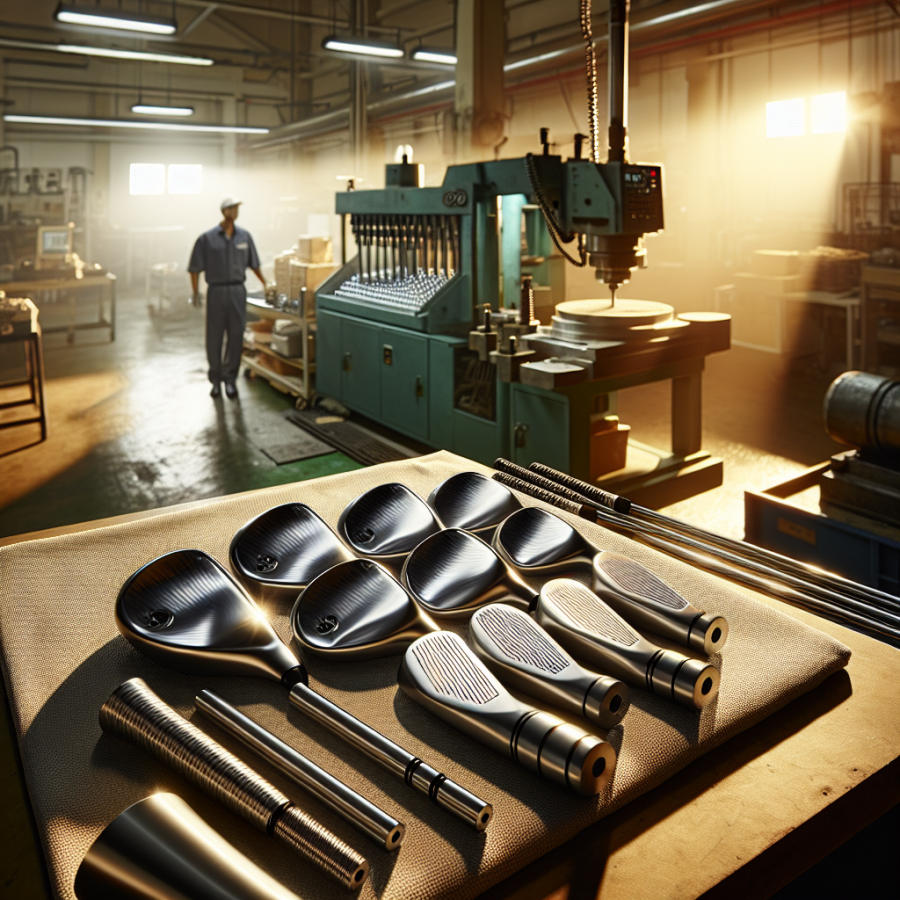Exploring the Intricate Steps of Golf Club Production
Golf club manufacturing is an intricate process that incorporates a blend of advanced technology and traditional craftsmanship. Elaborate steps are involved in creating these fundamental tools for golfers, enhancing their precision and performance on the course.
The first stage of golf club production involves design and research. Golf club manufacturers often employ a team of engineers and designers who use CAD (computer-aided design) to create golf clubs to precise specifications. They thoroughly study the behavior of golf balls and player swing mechanics to enhance the design, aerodynamics, weight distribution, and material usage.
Once a design gets finalized, it moves on to the mold making or forging process. Cast clubs are made using a process where molten metal is poured into a preformed mold. On the other hand, forged clubs are created by utilizing a solid piece of metal that is shaped under extreme pressure. Cast clubs comprise multi-piece designs, which offer more flexibility. Forged clubs are usually preferred by professionals due to their enhanced control and feel.
After the heads of the golf clubs are cast or forged, the club heads undergo a finishing procedure. This process includes polishing, buffing, and grinding to eliminate any kind of imperfections. Moreover, the club faces are milled to provide optimal roll and spin on the golf balls. Then, the grooves are etched in, which helps to increase traction, to guide ball spin and to channel away debris.
The golf club shafts are typically manufactured through a process known as roll-wrapping, where sheets of composite materials are rolled around a mandrel. The hollow carbon fiber shafts go through a rigorous process of curing, cutting, and painting. This process ensures optimal stiffness, weight, and torque, essential attributes for the golfer's swing.
Next, comes the grip installation. Grips are vital as they offer the vital connection between the golfer's hands and the club. They are either made from rubber, thermoplastics, silicone, or leather. The installing process requires the grip to be aligned correctly and then tightly secured to the golf club shaft.
Quality control is another essential step towards the final product. Each club gets thoroughly checked for any imperfections or manufacturing defects. The weight, loft, lie, and swing weight of the club are tested and correctly adjusted if needed.
Finally, the golf clubs get packaged and are ready to be shipped to retailers or directly to consumers who have ordered custom sets. This process also requires utmost carefulness to avoid any damage during transit.
Read also:
The Future of Soccer: Will it Ever Lose its Global Appeal?
The Materials and Technologies Involved in Golf Club Manufacturing
Golf club manufacturing involves a significant amount of highly technical processes, the use of advanced materials, and the application of innovative technologies. To understand the intricacies involved in making golf clubs, let's delve into the materials and technologies that come into play.
One of the essential materials used in golf club manufacturing is Titanium. Its light weight and strength make it ideal for the head of drivers and fairway woods. It is also corrosion-resistant, which extends the club's lifespan significantly. Some high-end clubs use a titanium alloy that can be lighter and more durable than traditional titanium clubs. This type of alloy provides better performance on the golf course.
Another commonly used material is Stainless Steel. This alloy is much heavier than Titanium, making it more suitable for irons. Stainless steel is hard, durable, and has an excellent ability to withstand the forces exerted during a golf swing. Most game improvement irons and cavity back irons are made with stainless steel due to its flexibility and reasonable price.
When it comes to putters, a range of materials could be used. Some putter heads are made from brass, while others are made from zinc or even aluminum. Some high-end putters may utilize carbon steel or milled aluminum, while putter shafts generally make use of steel or graphite.
As for club shafts, Graphite and Steel are the main materials. Graphite is lighter, allowing for faster swing speeds, and it usually comes in handy for drivers and fairway woods. However, they are more expensive. Steel shafts are more common, cheaper, and provide better feedback, often preferred by more experienced players.
Aside from the primary materials, other compounds like Tungsten and Carbon Fiber are sometimes added to the club heads. Tungsten is incredibly dense, allowing manufacturers to add weight to specific areas of the club head to improve performance or feel. Carbon Fiber is lightweight and can be used to free up mass that manufacturers can reposition in other parts of a club to produce preferable characteristics.
In terms of technologies, Computer-Aided Design (CAD) plays an indispensable role in the development of golf clubs. Engineers use CAD tools to design golf clubs to precise specifications and simulate performance under different conditions. The club's designs are then tested virtually before being fabricated and physically tested by professional golfers. This technology allows golf club models and designs to be perfected before going into mass production.
3D printing technology has also found its way into golf club manufacturing.




